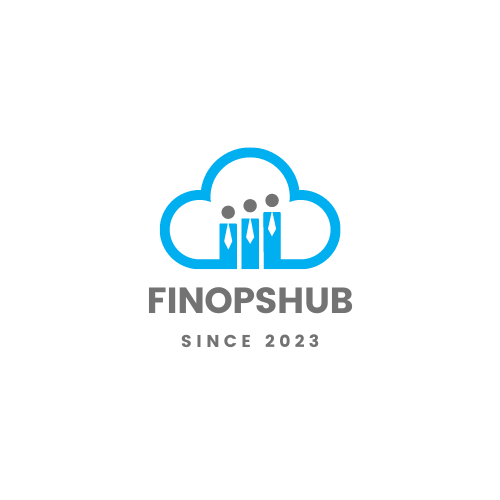To effectively manage cloud financial operations, it is essential to understand the FinOps Framework. This framework provides a structured approach to managing cloud costs, helping organizations balance financial strategies with operational goals while ensuring maximum cloud efficiency.
Core FinOps Principles
The FinOps framework is built on fundamental principles that guide organizations in managing cloud costs effectively. These principles form the foundation of the framework and ensure that cross-functional teams can work together to optimize cloud spending. Let’s break down the key principles:
| Principle | Description |
|---|---|
| Collaboration Across Teams | Ensures engineering, finance, and business teams work together on cloud costs. |
| Business Value Decisions | Cloud decisions should be driven by business value rather than purely cost. |
| Ownership of Cloud Usage | Teams must take ownership and accountability for their cloud consumption. |
| Data Accessibility | Real-time financial and usage data should be accessible to all stakeholders. |
| Centralized FinOps Team | A central team drives cloud cost management and ensures best practices. |
These principles ensure financial accountability and optimal use of cloud resources. By implementing them, organizations can align their cloud strategies with broader business objectives.

How to Implement the FinOps Framework
The FinOps Framework operates through a structured approach, broken down into key stages and actions that organizations can follow to manage cloud costs. Below is an overview of how to implement the FinOps framework successfully:
Establish FinOps Cultural Practices
Establishing a strong FinOps culture is critical to the success of cloud cost management. It involves promoting collaboration and transparency across departments. Breaking down silos between engineering, finance, and business units ensures shared responsibility and financial accountability.
Key components of a strong FinOps culture include:
| Practice | Purpose |
|---|---|
| Collaboration | Regular meetings to align cloud spending with business objectives. |
| Accountability | Teams must take ownership of their cloud costs and usage decisions. |
| Data-Driven Decisions | Leverage real-time financial data to make informed and timely decisions. |
Consider FinOps Operating Model
The FinOps operating model provides a framework for managing cloud costs across the organization. It consists of clear processes and the right tools to ensure that cloud financial operations run smoothly.
Here’s an overview of how the operating model works:
| Component | Description |
|---|---|
| Framework Establishment | Set up the FinOps structure and define cloud cost management goals. |
| Stakeholder Engagement | Ensure involvement of engineering, finance, and business teams in cloud decision-making. |
| Processes and Tools | Implement tools for cost visibility, management, and optimization. |
| Governance | Establish rules and policies for financial accountability and compliance. |
By establishing this operating model, organizations can ensure they have the right systems in place to optimize cloud spending.
The FinOps Lifecycle: Inform, Optimize, and Operate
The FinOps Framework follows a continuous improvement model, often described as the “Crawl, Walk, Run” approach. The lifecycle consists of three key phases:
| Phase | Objective | Activities | Outcome |
|---|---|---|---|
| Inform | Provide visibility into cloud usage and costs | Tagging resources, using dashboards, and tracking costs (e.g., AWS, Azure, GCP) | Enhanced transparency and understanding of cloud spend. |
| Optimize | Improve efficiency and reduce waste | Rightsizing resources, leveraging reserved instances and spot instances | Reduced costs and optimized resource usage. |
| Operate | Ensure continuous operations with financial control | Regular cost reviews, automating governance, and scaling resources as needed | Sustained cost management and predictable cloud spending. |
These phases are iterative, ensuring that organizations can continuously improve their cloud cost management practices.
Practical Applications of the FinOps Framework
To fully leverage the FinOps Framework, it is crucial to apply its principles and processes in real-world scenarios. Some key areas to focus on include:
- Cost Transparency: By tagging and monitoring cloud resources, organizations can gain insights into their cloud spending patterns.
- Optimizing Resources: Through rightsizing and choosing the appropriate instance types (e.g., reserved or spot instances), teams can reduce unnecessary costs.
- Real-Time Decision Making: Empower teams to make decisions based on real-time financial and usage data, ensuring that cloud resources are aligned with business goals.
For instance, using cost management platforms like AWS Cost Explorer, Azure Cost Management, or Google Cloud Recommender can help teams track their usage and find optimization opportunities.
The Power of the FinOps Framework
The FinOps Framework is essential for any organization looking to manage cloud costs effectively. By focusing on cross-team collaboration, data-driven decision-making, and accountability, the framework ensures that cloud financial management is aligned with overall business objectives.
Through its lifecycle phases—Inform, Optimize, and Operate—the FinOps framework helps organizations take control of their cloud spending, optimize resources, and maintain financial health.
For more insights on how to optimize cloud costs and implement the FinOps framework, explore our comprehensive guides on rightsizing cloud resources, cloud cost reduction strategies, and the FinOps lifecycle.




